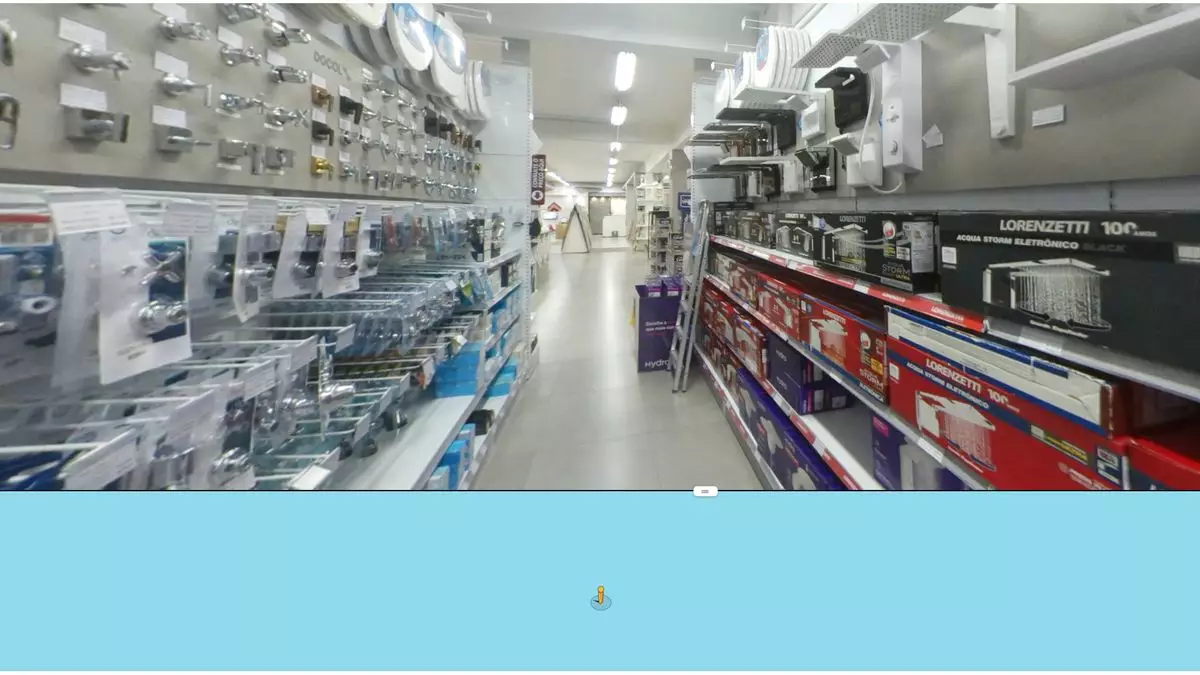Google Street View has changed the way we perceive our world, creating an interactive map that takes users on a virtual journey through cities, landscapes, and landmarks. However, as amusing as it is to virtually wander through familiar streets, recent discoveries have exposed a bizarre side of this digital tool. It appears that, in a few strange instances, businesses have been erroneously placed in the middle of the ocean through something akin to a celestial glitch.
We are introduced to the character of the Google Street View pin—a bright yellow figure. This unassuming, cartoonish depiction has become a humorous icon for navigating the vast information troves of Google Maps. However, there’s something disquieting about this little character. Its very existence represents a life devoid of agency, forever stuck as a passive observer in a fast-moving digital tapestry. This pin quietly transmits the mundane realities of locations it has been dropped into, only to feel the emptiness of being marooned in a commercial facade that nobody visits and nobody cares about. When tossed into arbitrary points around the globe, there’s an odd irony to the Street View pin lamenting its purpose, as the vast oceans and uncharted territories seem to swallow it whole.
The journey begins when Reddit users, curious about the oddities of Google Maps, stumble upon some unexpected sights—interior images supposedly located in the Atlantic Ocean, including the odd juxtaposition of a hardware store’s bathroom aisle presented amid waves and sea life. This strange misplacement invites speculation. How does one end up with an apparently mundane hardware shop at the bottom of the ocean? Given that Google Street View allows business owners to submit their locations via Street View Studio, the key to this mystery may lie in maps and coordinates gone awry.
These digital blunders have revealed a pattern, reminiscent of episodes from a surreal horror show. Not only does one strange listing appear, but there are multiple documented instances where businesses, in all their banality, float upon digital waters. Even more surprising, these listings come from marketing companies, raising the possibility of a colossal marketing misunderstanding where a faux pas in geolocation somehow led to a sensational internet frenzy.
Communities like those on Reddit have taken flight with these findings, engaging in discussions that are part amusement, part bewilderment. Users sharing their findings and reactions transform the phenomenon into an enjoyable exercise in collective curiosity. As they probe deeper, they form theories about the madness of modern technology. Questions loom: Are there rogue marketing agents at play scheming to capture attention in a highly competitive world? Or is there something else at work—could these be footprints of alternate realities, inadvertently crossing into our world?
As amusing as the idea may seem, it’s essential to ground our wonderment in logic. Occam’s Razor suggests a more straightforward explanation: ist these anomalies likely arise from simple errors in metadata or submissions. Yet the allure of pondering bizarre possibilities is irresistible. What if these businesses are actually liminal portals, inadvertently exposing us to glimpses of parallel universes? Creative theories abound, but the reality lies in faulty data entry or the misuse of a tool meant to enhance visibility.
In an age where everything is interconnected, the floating Street Views challenge us to consider the deeper implications of technology. They prompt us to question how digital platforms can misrepresent reality. This begs the broader question of authenticity in the world of online maps and experiences. Is what we see an accurate reflection of actual places, or should we maintain skepticism about the reliability of our digital tools?
While it’s easy to chuckle at the absurdity of a bathroom aisle bobbing in the ocean, it serves as a reminder of the peculiar limits of technology when human error comes into play. Exciting yet perplexing, the surfing of geolocation provides entertainment today while urging us to navigate carefully through the labyrinth of the virtual and the real. As we continue to explore virtual landscapes, may we always remain inquisitive, questioning discrepancies and reflecting on the narratives constructed within our digital frameworks.

